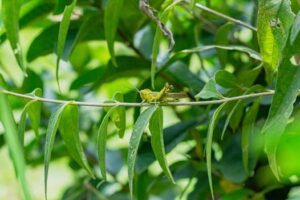⏱️ 5 min read
When audiences first experienced Steven Spielberg's groundbreaking 1993 film Jurassic Park, they were transported to a world where dinosaurs lived and breathed once more. The visual effects were revolutionary, but it was the haunting roars, bellows, and calls of these prehistoric creatures that truly brought them to life. What many viewers don't realize is that the iconic sounds of Jurassic Park's dinosaurs came not from computer-generated audio, but from creative combinations of recordings from living animals, creating an auditory illusion that would define how generations imagine dinosaurs sound.
The Challenge of Creating Dinosaur Audio
Sound designer Gary Rydstrom faced an unprecedented challenge when tasked with creating the audio landscape for Jurassic Park. No human had ever heard a living dinosaur, and fossil records provide no clues about the vocalizations these creatures might have made. Unlike the visual effects team, which could rely on skeletal structures and scientific consultation, the sound department had to venture into completely uncharted territory. The solution required both scientific reasoning and creative artistry, blending knowledge of animal physiology with cinematic impact.
Rydstrom and his team at Skywalker Sound understood that the dinosaur sounds needed to feel authentic while also serving the emotional needs of the narrative. Each species required a distinct vocal identity that would help audiences differentiate between them and connect with their on-screen presence, whether as predator or prey.
The Tyrannosaurus Rex: A Terrifying Symphony
The Tyrannosaurus Rex's roar stands as perhaps the most memorable sound effect in cinema history. Creating the vocal signature for cinema's most famous predator required layering sounds from multiple animals. The primary components came from baby elephants, with their high-pitched squeals providing an unexpected foundation. These were combined with the threatening growls of tigers and alligators, and the breathing sounds of whales.
The baby elephant sounds might seem counterintuitive for creating a fearsome predator's voice, but the trumpeting calls, when slowed down and processed, provided a resonant quality that suggested the massive lung capacity such a creature would possess. The tiger elements added aggressive snarling characteristics, while alligator vocalizations contributed deep, guttural frequencies. This masterful blend created a sound that was simultaneously biological and otherworldly, terrifying yet somehow believable.
Velociraptors: Complex Communicators
The Velociraptors presented a different challenge, as these intelligent pack hunters needed a sophisticated vocal range to communicate with each other and convey their cunning nature. The raptor sounds drew primarily from walruses, tortoises mating, geese, and dolphins. The clicking and chattering sounds that the raptors use to communicate came from recordings of dolphins and their echolocation patterns.
For the aggressive hissing and breathing sounds that made the raptors so menacing, the sound team recorded tortoises during mating season. These recordings, when manipulated and combined with other elements, created the distinctive breathy quality that made the raptors sound both reptilian and eerily intelligent. The walrus contributions added weight and depth to their calls, suggesting creatures of substantial size and presence.
The Brachiosaur's Gentle Giant Voice
Not all dinosaur sounds needed to inspire terror. The peaceful, herbivorous Brachiosaur required vocalizations that conveyed its massive size while maintaining a gentle quality. The sound design team combined whale songs with donkey calls to achieve this effect. The whale vocalizations provided the low-frequency resonance appropriate for such an enormous creature, while the donkey brays, when slowed and processed, added a plaintive, almost musical quality to the Brachiosaur's calls.
This combination created one of the film's most memorable moments when the characters first encounter the towering sauropods, and audiences hear their haunting calls echoing across the island landscape.
The Dilophosaurus: Small but Deadly
The Dilophosaurus, the spitting dinosaur that attacks Dennis Nedry, needed sounds that matched its unique characteristics and deceptive nature. The hooting and calling sounds came primarily from hawks, swans, and howler monkeys. These sources created the unsettling combination of bird-like qualities mixed with mammalian aggression, reinforcing the creature's role as a surprising threat despite its smaller size compared to the T-Rex.
The Art and Science of Sound Design
The process of creating these dinosaur voices required extensive field recording, with the sound team visiting zoos, aquariums, and wildlife preserves to capture source material. Each recording session provided raw material that would later be manipulated through various techniques including pitch-shifting, time-stretching, layering, and filtering. The team would often record hundreds of sounds before finding the perfect element for a particular dinosaur vocalization.
The scientific approach involved considering factors such as body size, lung capacity, and the likely structure of vocal organs based on modern animal analogues. Rydstrom's team consulted with paleontologists and studied the vocalizations of birds, the living descendants of dinosaurs, as well as large reptiles like crocodiles and alligators.
Legacy and Influence
The success of Jurassic Park's sound design earned Gary Rydstrom an Academy Award and fundamentally changed how dinosaurs are portrayed in media. The specific sounds created for this film have become so iconic that subsequent dinosaur films and documentaries have often borrowed or imitated them, making these invented vocalizations the de facto standard for how audiences expect dinosaurs to sound.
The innovative approach demonstrated that effective creature sound design requires equal parts creativity, technical skill, and understanding of how audiences perceive and connect with non-human vocalizations. The dinosaurs of Jurassic Park sound real because they're built from real animal sounds, expertly crafted into something entirely new yet hauntingly familiar.






















